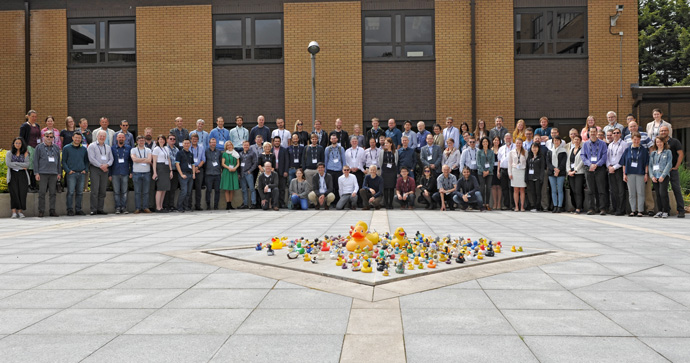ECMWF | Reading | 3-6 June 2019
A forum to discuss the use and performance of ECMWF's forecasts and related products
“Using ECMWF’s Forecasts” provides a forum for exchanging ideas and experiences on the use of ECMWF data and products. It is open to all ECMWF forecast users around the world and provides an opportunity to give feedback to ECMWF on forecast performance and on the range of available products, and to learn about recent developments of ECMWF’s forecasting system.
2019 theme: “The strength of ensembles”
National weather services and private weather providers have recognised the importance of ensemble forecasts and that information about uncertainty improves the ability to make decisions based on weather forecasts. ‘Forecasts are not complete without information on uncertainty’ was one of the closing messages of a past UEF meeting. In 2019 return to the topic of ensembles and their strength.
Twenty-five years ago ECMWF was one of the first forecasting centres to start issuing operational ensemble forecasts. The implementation of these ensembles induced a paradigm shift in numerical weather prediction (NWP). Centres moved from providing a single forecast to issuing a range of forecasts that can be used to identify possible future scenarios, to compute the probability of events of interest, and in general to estimate forecast confidence levels. Today, ensembles are routinely used to provide estimates of the probability distributions of analyses and forecasts. Great progress has been made to aid their visualisation and communication to wider audiences.
The UEF meeting offered an opportunity for participants to showcase the strength of ensembles. The meeting also provided a framework where participants shared their experiences with ECMWF data and provided feedback on ECMWF products.
UEF2019 focused on the following thematic areas:
-
Processing of model outputs: this session was dedicated to model output developments.
-
Visualisation: this session included contributions about the visualisation of ensembles and derived products
-
Verification and diagnostics: this session focused on the assessment of the skill and consistency of ensemble forecasts, including impacts.
-
Application and Impact forecasting: this session looked at how weather forecasts are used in applications for sectors such as water, energy, agriculture, fire and health. It featured case studies showing the strength of ensembles in such applications.
Posters
|
Strength of ensembles in application forecasting: from hourly through to sub-seasonal forecasts |
|
|
CTBTO experience in visualisation of ensembles and derived products |
|
|
How predictable were Arctic cyclones in summer on medium-range timescales? |
|
|
Seamless Probabilistic Forecasts from IMPROVER |
|
|
IMPROVER - the new probabilistic post processing system at the Met Office |
|
|
The new Extreme Weather Index as a possible tool to predict high impact weather |
|
|
Prediction of Overrunning Snowfall in Ankara on the 14th of December 2018 with ECMWF Ensemble Products |
|
|
Elaboration of the Recorded Highest Daily Total Precipitation in Ovacık with ECMWF Products (Antalya, Turkey, 17th of December 2018) |
Presentations and recordings
Monday 3 June 2019
|
Welcome and housekeeping |
n/a |
|
|
ECMWF product development |
||
|
ECMWF strategic projects: an overview |
||
|
ECMWF forecast performance |
Tuesday 4 June 2019
Wednesday 5 June 2019
|
Applications of ensemble prediction systems at Météo-France |
||
|
Ensemble based seven day high impact weather outlook |
||
|
Progressive warnings with conservative forecasting |
||
|
Challenges and Limits in Ensemble Weather Prediction |
||
|
Users of ECMWF/Copernicus data in the spotlight – A user perspective on current and future cloud-based data systems (not live streamed) |
n/a |
n/a |
Thursday 6 June 2019
|
Probabilistic fire spread prediction: The case of the deadly wildfire in Mati, Greece |
||
|
Quantifying uncertainties and confidence level in ATM simulations |
||
|
Goodbye ERA-Interim, hello ERA5 |
||
|
Seasonal forecasts from the Copernicus Climate Change Service |

